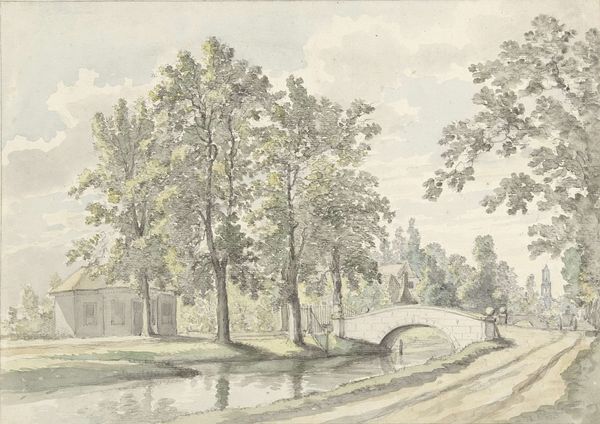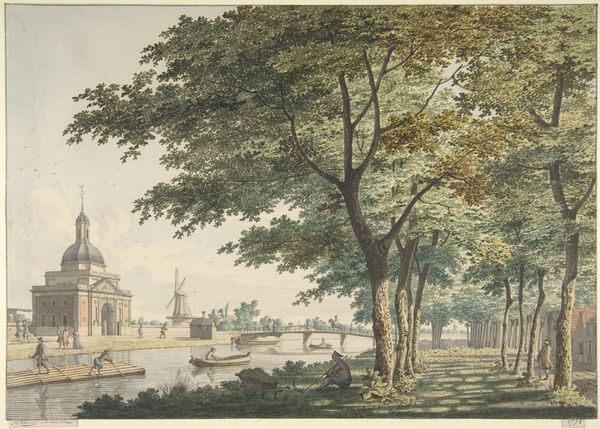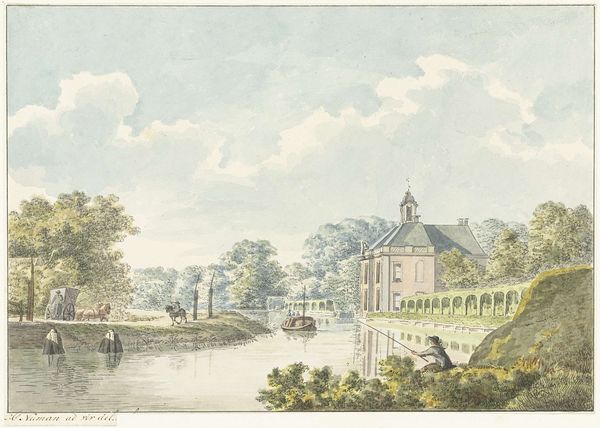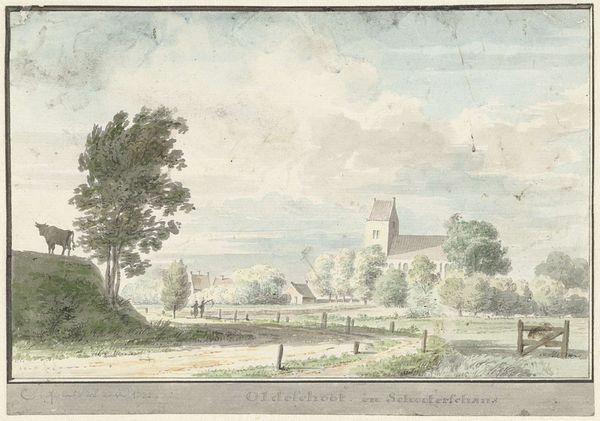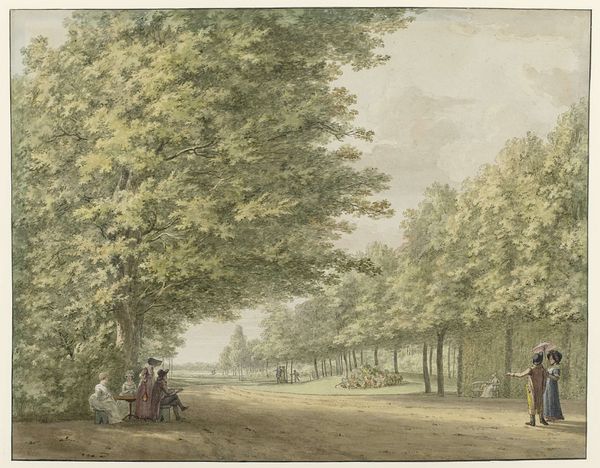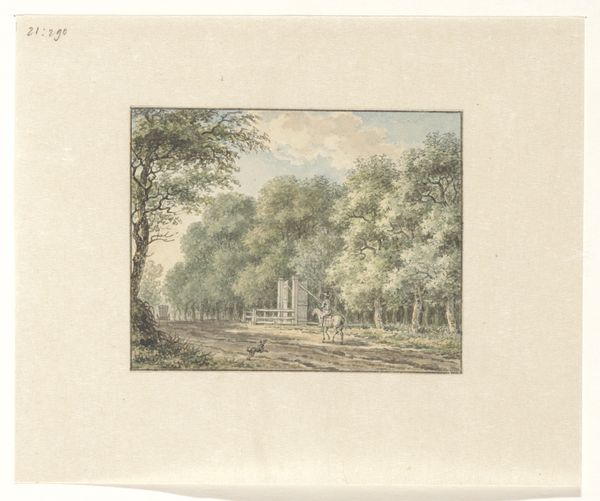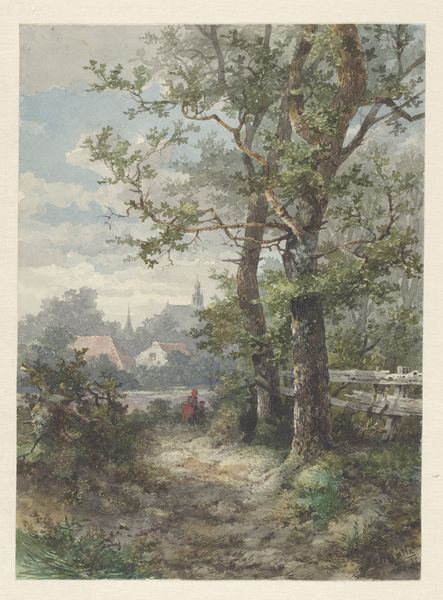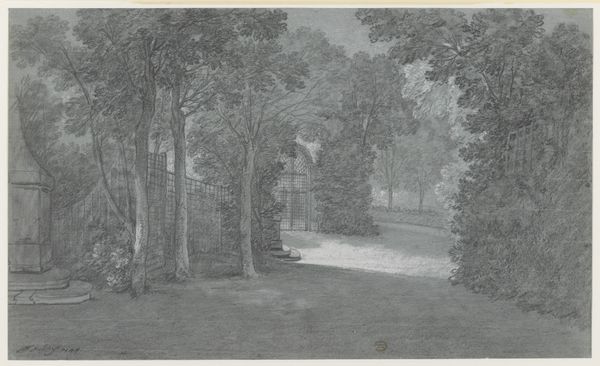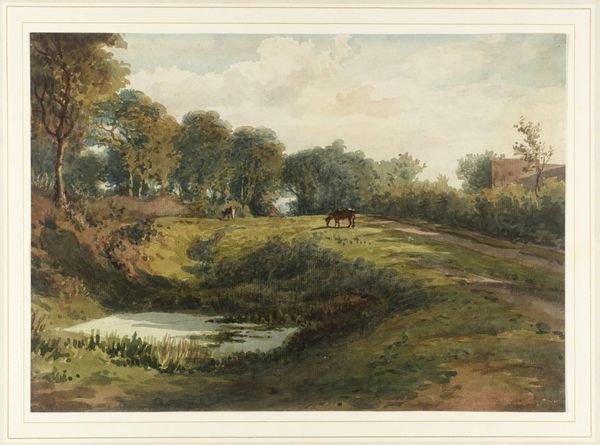
drawing, plein-air, paper, ink, architecture
#
drawing
#
neoclacissism
#
plein-air
#
landscape
#
paper
#
ink
#
architecture
Dimensions: height 168 mm, width 235 mm
Copyright: Rijks Museum: Open Domain
Curator: Here we have Hermanus Numan’s "The Velzerbeek Estate near Velsen," a work created sometime between 1754 and 1820, employing ink on paper. What’s your first impression? Editor: It feels like stepping into a memory. A hushed, green world… everything rendered with such delicacy. Almost ethereal. I love the bridge – a gentle arc reflected in the water. Curator: Yes, Numan’s drawing really captures that sense of tranquility. We have the scene set with architecture nestled amidst lush trees and foliage. And the execution showcases the plein-air method gaining prominence at that time. The way it’s made; going out to sketch Nature instead of imagining it, it brings us into the lived realities of the period, allowing the aristocratic class a picturesque landscape to observe and commune with. Editor: I agree! And I appreciate how it almost feels a little bit... curated. Not just in the museum sense, but in the estate sense, as though this untouched space still subtly communicates something manufactured to be the “ideal” natural vista, wouldn’t you say? Curator: Precisely! That curated element is central to understanding how land ownership was showcased in that period. It reveals how control over nature served as an extension of social dominance. Editor: Thinking about Numan situated somewhere in this green idyllic space. Did that mean making nature into something palatable, transforming wild spaces into domesticated artworks? How does this all translate when art finds a home inside museums, a location of great control that inevitably changes what we see? Curator: Well, it certainly provides an interesting commentary on the complex layers that shape not just our perception but also our understanding of art and history. What starts off as an aesthetic appreciation soon evolves into unpacking deeper societal concepts embedded inside art's nature. Editor: It seems even the most bucolic landscape paintings become another piece to decode as history. Curator: Exactly. It urges us to consider art's broader impact, both within and outside the gallery context. Editor: What a perfect blend between an image of "idealized" beauty, yet loaded with cultural commentary. This whole thing definitely feels less gentle now, thanks. Curator: Haha! My pleasure! It's why engaging with such historical pieces becomes imperative—each visit allows us a new depth.
Comments
No comments
Be the first to comment and join the conversation on the ultimate creative platform.
